
Steinberg Cubase
Cubase 4
Developed by Steinberg
OS Mac OS X, Microsoft Windows
Genre Digital music workstation
License Proprietary
Website http://www.steinberg.net/27_1.html
Cubase is a series of MIDI, music sequencer and digital audio editing computer applications (commonly known as a DAW - Digital Audio Workstation), created by the German firm Steinberg. Its first version, which ran on the Atari ST computer, was released in 1989.
Contents
[hide]
Steinberg's Cubase (at first briefly known as 'Cubit') started life on the Atari ST in 1989, as the successor Sequencer to Steinberg's professional sequencer "Pro 24" - it was a complete software re-write. Cubase's most obvious benefit over Pro 24 was its vastly superior arrange page ― in fact, Cubase's arrange page is now widely regarded as the first sequencer to 'get it right', and its paradigm was later wisely incorporated into virtually all the major sequencers (for example, Logic).
However, as the Atari market slowly diminished, Cubase was ported to the Apple Macintosh and Microsoft Windows platforms and subsequent versions introduced features for recording raw audio (Circa late 1992). This porting re-invigorated the Mac sequencer developers, and as time passed, they began to gradually catch-up with their European challengers.
The original Cubase used its own operating system called MROS (MIDI Real-time Operating System) which ran on top of the computer's own operating system. MROS did not initially work well on Windows 3.0, which was not intended for real-time applications. However, modern operating systems are designed to support multimedia applications, so modern versions of Cubase no longer use MROS.
The release of Cubase in 1993 on the Atari Falcon was a breakthrough in DSP software technology as realtime manipulation of audio was possible without the assistance of additional processor cards, as was the case with the more costly Pro Tools and other similar systems.
[edit] Operation
Cubase creates projects which allow the operator to edit MIDI files, raw audio tracks, and other associated information like lyrics, and to present them in a range of formats including musical scores, editing console, event lists, etc. The operator can also mix the various tracks down into a stereo .wav file ready to be burned onto a CD in Red Book format or .mp3 burnt to CD or DVD as files or to be published on the web.
While MIDI is a fairly ubiquitous standard for representation of digital music, there is no broadly accepted standard for the interchange of complete projects containing both MIDI and audio between Cubase and other competing recording/editing software (e.g. Logic Pro, Pro Tools, Digital Performer, or Cakewalk), so while actual pure recorded audio information can be exchanged, it is hard to import a whole project (with specific edits, instrument information and automation) in its native format from Cubase to another application and vice versa. The cross-platform OMFI format (which is supported by Cubase SX) resolves this issue to some extent.
[edit] Versions
[edit] Cubase 1.0 Atari
Cubase for Atari on a monochrome monitor
Cubase for Atari on a monochrome monitor
April 1989 -- Originally called Cubit, but changed to Cubase due to copyright reasons, this was the much awaited succesor to Pro-24. Cubase for Atari was MIDI only and ran on the Atari 520ST and Atari 1040ST. Although it would run on a colour screen, the best resolution was obtained by using the SM 124 monochrome monitor which gave, for its time, an impressive resolution of 640x400
The main innovation of Cubase for the Atari was the graphic arrange page. The Arrange Page, since copied by just about every other similar product, allowed for the graphic representation of the composition using a vertical list of tracks and a horizontal timeline.
1990 -- Cubase 1.0 is released for the Apple Macintosh
[edit] Cubase 2.0 Atari
April 1990
[edit] Cubase Audio
1991 - Macintosh
1993 - Release on the Atari Falcon 030. This version brings DSP built-in effects with 8-tracks audio playback. It was an incredible solution for the price at this time. Later versions enable 16-tracks mode.
[edit] Cubase 3.0 Atari
1992
[edit] Cubase for Windows
1992
[edit] Cubase Score for Windows
1
Cubase 4.0 marked the end of the SX nametag, however the SE nametag is still in existence. It also marked the end of DX Plugin Support. Whatever technical or economic reason Steinberg had for dropping the use of DX Plugins in Cubase 4 it had a big impact on customer satisfaction. Not only that but there was no prior announcement before release to allow users to plan ahead. It was up to a user, on the Cubase Forums to announce the fact that DX Plugins were no longer supported in the program. This caused an outcry.
Cubase 4.0 brought a GUI change. In general the GUI was darker than the previous version, Cubase SX3, and on the whole was warmly welcomed, although some elements are considered by many users to be a little too dark on some monitors.
With this version the Plset system was changed. The FXP ( Preset ) and FXB ( Bank ) files were discontinued along with the drop down menu xml presets. They were replaced by a preset system that integrates in the new feature, the Media Bay which allows deeper categorisation and management of presets at the expense of ergonomics/speed.
[edit] Cubase 4.1
2007
Cubase 4.1 was released on October 23rd 2007. Apart from a host of bugfixes, V4.1 added some new features, including Sidechaining, Free Group Routing, Project Logical Editor, Recording from Sum Objects. Existing Features were also improved including the Play Order Track and the Audiowarp which is now integrated into the Audio Sample editor
[edit] Notes
Cubase has existed in three main incarnations - initially Cubase, which featured only MIDI, and which was available on the Atari ST, Macintosh and Windows.
After a brief period with audio integration, the next version, Cubase VST, featured fully-integrated audio recording and mixing along with effects, added VST support, a standard for audio plug-ins which has led to a plethora of third-party effects, both freeware and commercial. Cubase VST was only for Macintosh and Windows - Atari support had been effectively dropped by this time, despite such hardware still being a mainstay in many studios.[citation needed] Cubase VST was offering a tremendous amount of power to the home user,[citation needed] but computer hardware took some time to catch up. By the time it did, VST's audio editing capability was found to be lacking when compared with competitors such as Pro Tools DAE and Digital Performer MAS.[citation needed]
To address this, a totally new version of the program, Cubase SX (based on Steinberg's flagship post-production software Nuendo) was introduced, which dramatically altered the way the program ran. This version had a steep learning curve for users of older Cubase versions. However, once the new methods of working were learned, the improvements in handling of audio and automation made for a more professional sequencer and audio editor.[citation needed]
A notable improvement with the introduction of Cubase SX was the advanced audio editing, especially the ability to 'undo' audio edits. Early versions of Cubase VST did not have this capability. Cubase SX also featured real-time time-stretching and adjustment of audio tempo, much like Sonic Foundry's ground-breaking ACID.
In September 2006 Steinberg announced Cubase 4 - the successor to Cubase SX3. Notable new features include 'control room', a feature designed to ease the creation of monitor mixes, and a new set of VST3 plug-ins and instruments.
There also exists a lighter economic alternative by Steinberg named Cubasis.
Almost all versions of Cubase use dongles for copy protection. Dongles are flexible in that they allow free license transfer between host machines.
The Atari versions used the cartridge port for this purpose. Parallel port dongles were employed as copy protection up until Cubase VST5.1.
Cubase SX V1.0 introduced the use of cross-platform USB dongles combined with a system of code encryption licensed from Syncrosoft. This protection has been successively broken for all versions of Cubase up to Cubase SX3.1. However, the copy protection for Cubase SX3 did manage to survive unbroken for 9 months after its public release, and the copy protection for Cubase 4 has managed to avoid being cracked for longer than SX3 did since its public release
Cubase 4
Developed by Steinberg
OS Mac OS X, Microsoft Windows
Genre Digital music workstation
License Proprietary
Website http://www.steinberg.net/27_1.html
Cubase is a series of MIDI, music sequencer and digital audio editing computer applications (commonly known as a DAW - Digital Audio Workstation), created by the German firm Steinberg. Its first version, which ran on the Atari ST computer, was released in 1989.
Contents
[hide]
Steinberg's Cubase (at first briefly known as 'Cubit') started life on the Atari ST in 1989, as the successor Sequencer to Steinberg's professional sequencer "Pro 24" - it was a complete software re-write. Cubase's most obvious benefit over Pro 24 was its vastly superior arrange page ― in fact, Cubase's arrange page is now widely regarded as the first sequencer to 'get it right', and its paradigm was later wisely incorporated into virtually all the major sequencers (for example, Logic).
However, as the Atari market slowly diminished, Cubase was ported to the Apple Macintosh and Microsoft Windows platforms and subsequent versions introduced features for recording raw audio (Circa late 1992). This porting re-invigorated the Mac sequencer developers, and as time passed, they began to gradually catch-up with their European challengers.
The original Cubase used its own operating system called MROS (MIDI Real-time Operating System) which ran on top of the computer's own operating system. MROS did not initially work well on Windows 3.0, which was not intended for real-time applications. However, modern operating systems are designed to support multimedia applications, so modern versions of Cubase no longer use MROS.
The release of Cubase in 1993 on the Atari Falcon was a breakthrough in DSP software technology as realtime manipulation of audio was possible without the assistance of additional processor cards, as was the case with the more costly Pro Tools and other similar systems.
[edit] Operation
Cubase creates projects which allow the operator to edit MIDI files, raw audio tracks, and other associated information like lyrics, and to present them in a range of formats including musical scores, editing console, event lists, etc. The operator can also mix the various tracks down into a stereo .wav file ready to be burned onto a CD in Red Book format or .mp3 burnt to CD or DVD as files or to be published on the web.
While MIDI is a fairly ubiquitous standard for representation of digital music, there is no broadly accepted standard for the interchange of complete projects containing both MIDI and audio between Cubase and other competing recording/editing software (e.g. Logic Pro, Pro Tools, Digital Performer, or Cakewalk), so while actual pure recorded audio information can be exchanged, it is hard to import a whole project (with specific edits, instrument information and automation) in its native format from Cubase to another application and vice versa. The cross-platform OMFI format (which is supported by Cubase SX) resolves this issue to some extent.
[edit] Versions
[edit] Cubase 1.0 Atari
Cubase for Atari on a monochrome monitor
Cubase for Atari on a monochrome monitor
April 1989 -- Originally called Cubit, but changed to Cubase due to copyright reasons, this was the much awaited succesor to Pro-24. Cubase for Atari was MIDI only and ran on the Atari 520ST and Atari 1040ST. Although it would run on a colour screen, the best resolution was obtained by using the SM 124 monochrome monitor which gave, for its time, an impressive resolution of 640x400
The main innovation of Cubase for the Atari was the graphic arrange page. The Arrange Page, since copied by just about every other similar product, allowed for the graphic representation of the composition using a vertical list of tracks and a horizontal timeline.
1990 -- Cubase 1.0 is released for the Apple Macintosh
[edit] Cubase 2.0 Atari
April 1990
[edit] Cubase Audio
1991 - Macintosh
1993 - Release on the Atari Falcon 030. This version brings DSP built-in effects with 8-tracks audio playback. It was an incredible solution for the price at this time. Later versions enable 16-tracks mode.
[edit] Cubase 3.0 Atari
1992
[edit] Cubase for Windows
1992
[edit] Cubase Score for Windows
1
Cubase 4.0 marked the end of the SX nametag, however the SE nametag is still in existence. It also marked the end of DX Plugin Support. Whatever technical or economic reason Steinberg had for dropping the use of DX Plugins in Cubase 4 it had a big impact on customer satisfaction. Not only that but there was no prior announcement before release to allow users to plan ahead. It was up to a user, on the Cubase Forums to announce the fact that DX Plugins were no longer supported in the program. This caused an outcry.
Cubase 4.0 brought a GUI change. In general the GUI was darker than the previous version, Cubase SX3, and on the whole was warmly welcomed, although some elements are considered by many users to be a little too dark on some monitors.
With this version the Plset system was changed. The FXP ( Preset ) and FXB ( Bank ) files were discontinued along with the drop down menu xml presets. They were replaced by a preset system that integrates in the new feature, the Media Bay which allows deeper categorisation and management of presets at the expense of ergonomics/speed.
[edit] Cubase 4.1
2007
Cubase 4.1 was released on October 23rd 2007. Apart from a host of bugfixes, V4.1 added some new features, including Sidechaining, Free Group Routing, Project Logical Editor, Recording from Sum Objects. Existing Features were also improved including the Play Order Track and the Audiowarp which is now integrated into the Audio Sample editor
[edit] Notes
Cubase has existed in three main incarnations - initially Cubase, which featured only MIDI, and which was available on the Atari ST, Macintosh and Windows.
After a brief period with audio integration, the next version, Cubase VST, featured fully-integrated audio recording and mixing along with effects, added VST support, a standard for audio plug-ins which has led to a plethora of third-party effects, both freeware and commercial. Cubase VST was only for Macintosh and Windows - Atari support had been effectively dropped by this time, despite such hardware still being a mainstay in many studios.[citation needed] Cubase VST was offering a tremendous amount of power to the home user,[citation needed] but computer hardware took some time to catch up. By the time it did, VST's audio editing capability was found to be lacking when compared with competitors such as Pro Tools DAE and Digital Performer MAS.[citation needed]
To address this, a totally new version of the program, Cubase SX (based on Steinberg's flagship post-production software Nuendo) was introduced, which dramatically altered the way the program ran. This version had a steep learning curve for users of older Cubase versions. However, once the new methods of working were learned, the improvements in handling of audio and automation made for a more professional sequencer and audio editor.[citation needed]
A notable improvement with the introduction of Cubase SX was the advanced audio editing, especially the ability to 'undo' audio edits. Early versions of Cubase VST did not have this capability. Cubase SX also featured real-time time-stretching and adjustment of audio tempo, much like Sonic Foundry's ground-breaking ACID.
In September 2006 Steinberg announced Cubase 4 - the successor to Cubase SX3. Notable new features include 'control room', a feature designed to ease the creation of monitor mixes, and a new set of VST3 plug-ins and instruments.
There also exists a lighter economic alternative by Steinberg named Cubasis.
Almost all versions of Cubase use dongles for copy protection. Dongles are flexible in that they allow free license transfer between host machines.
The Atari versions used the cartridge port for this purpose. Parallel port dongles were employed as copy protection up until Cubase VST5.1.
Cubase SX V1.0 introduced the use of cross-platform USB dongles combined with a system of code encryption licensed from Syncrosoft. This protection has been successively broken for all versions of Cubase up to Cubase SX3.1. However, the copy protection for Cubase SX3 did manage to survive unbroken for 9 months after its public release, and the copy protection for Cubase 4 has managed to avoid being cracked for longer than SX3 did since its public release










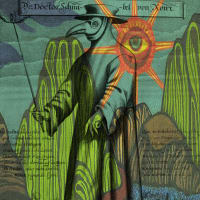
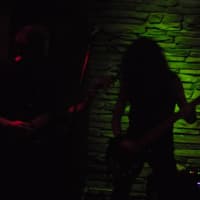
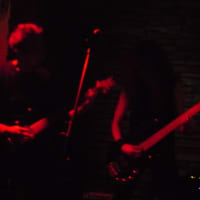
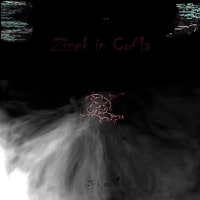
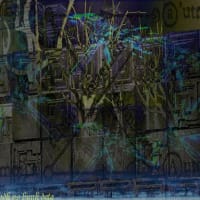
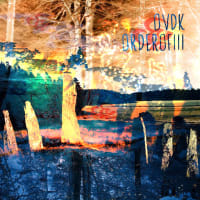
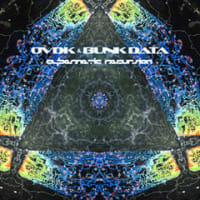
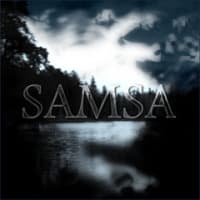
※コメント投稿者のブログIDはブログ作成者のみに通知されます